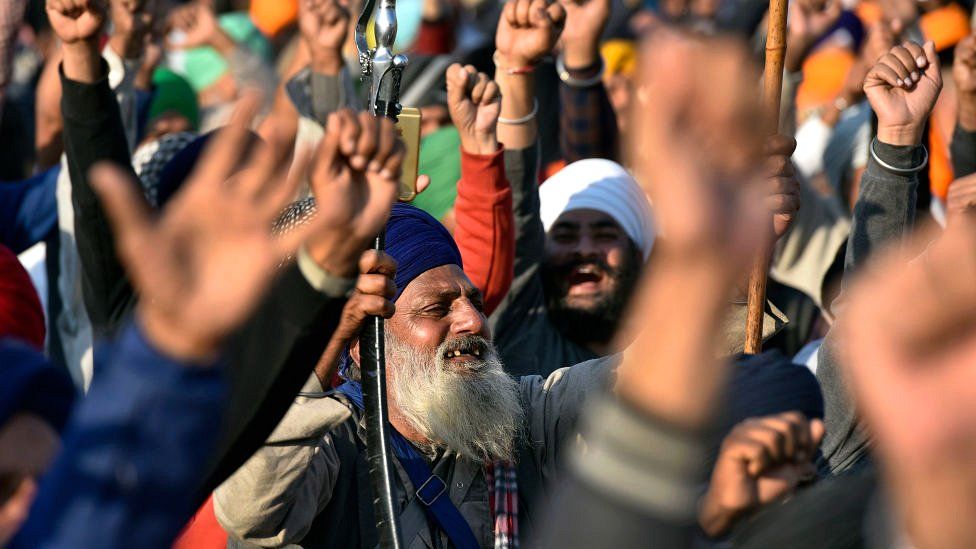Topic: India farmer protests: How rural incomes have struggled to keep up
India farmer protests: How rural incomes have struggled to keep up

Global celebrities and public figures have weighed in on social media with their views on the farmer protests in India drawing international attention towards the issue.
Indian farmers have been on the road since November last year, seeking repeal of three new farm laws and demanding minimum support prices for their produce.
Leaders from the ruling Bharatiya Janata Party (BJP) say the new farms laws will double farmers' income - a promise made by Prime Minister Narendra Modi in 2016.
So is there any evidence that rural livelihoods have been improving?
What's happened to rural incomes?
More than 40% of India's workforce is engaged in agriculture, according to the World Bank.
There are no official figures for rural household income in recent years, but there is data on agricultural wages (an important part of rural income) which shows the rate of growth slowing down between 2014 and 2019.
And India has seen rising inflation in the last few years, with World Bank data showing that consumer price inflation grew from just under 2.5% in 2017 to nearly 7.7% in 2019.
This has eaten into wage gains.
India conducted surveys in 2013 and 2016 which showed an increase in farmers' incomes in absolute terms of nearly 40% over that period.
However, a report by the Organisation for Economic Co-operation and Development (OECD) in 2018 estimated that in real terms, farmers' incomes increased by just 2% a year over those three years.
Are government targets being met?
In 2017, a government committee reported that incomes for farmers would need to grow by 10.4% each year from 2015 for them to double by 2022.
That's not been happening.
It also said the government needed to invest 6.39bn rupees (£64bn; $86bn) in the agricultural sector.
Data on both public and private investment shows it has been falling.
More stories can be read here. : สล็อต